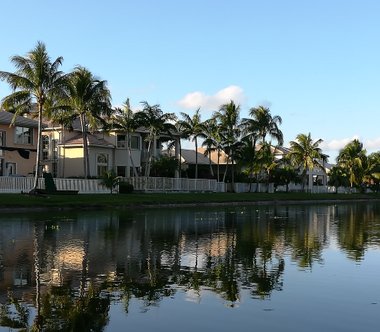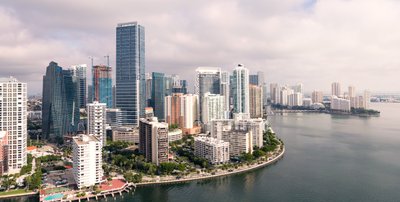Types of Florida Real Estate and Resources
Gated Communities
The popularity and security of living in a gated community is more prevalent than ever in Florida. In the last 10 years, this style of living is becoming more and more popular with the upper and middle class families for the added security, lifestyle, amenities and stable property values. Many buyers are seeking this dynamic lifestyle and security more than ever.
Most gated community developments are designed with various amenities built around a particular lifestyle, such as championship golf courses, tennis centers, swimming pools, or equestrian facilities. And, frequently gated communities are located on some of the "most desirable" land in Florida. Prime land, combined with careful planning and HOA rules create an environment where home values stay steady, or rise, extremely well.
Aside from the gates, the second most defining characteristic of gated or private communities is the Homeowner's Association (HOA). Typically, there are "fees" paid on an annual basis to the HOA. These fees can range from as little as $100 per year for flowers around the subdivision monument and gate to thousands for private membership in a country club or marina. Usually professionally managed, the HOA is responsible for collection of the association fees and making and enforcing the "rules" of the community, including the architectural design of homes. Often it may be responsible for maintaining the public aspects of the community, such as streets, security, parks, community buildings, etc.
The Homeowner's Association's rules and regulations can vary a great deal, depending on the individual development. Typically, there are rules pertaining to upkeep and appearance of the homes within the development, specifying the colors of paint on outside walls, types of fencing, size and types of pets, rental restrictions, guidelines for landscaping, and storage of boats or recreational vehicles. Thus, it's very "important" to find out what the requirements are before you purchase a home or condo in these types of communities.
Condominiums
A condominium is a type of living space which is similar to an apartment but which is independently sellable. It is where the condominium building structure is divided into several units that are each separately owned, surrounded by common areas that are jointly owned. Owners of the individual units also collectively own the common areas of the property, such as hallways, walkways, laundry rooms, etc.; as well as common utilities and amenities, such as the HVAC system, elevators, etc.
There are several types of condominiums in Florida:
- Townhomes are low-rise Florida condos featuring the main living area on the first floor and usually all bedrooms upstairs. This design will almost always offer a one car garage.
- Low-rise Florida condos usually have two bedrooms, or two plus a den, full guest bath and a shower only in the master bedroom, these floorplans range from 1,100 SF to about 1,300 SF and have a carport with small storage closet for each unit. The entire unit is either on the first or second floor with exterior stairs for access to the upstairs home. The parking area is just like a parking lot with the spaces may be assigned or not and on a first come basis.
- Mid-rise Florida condo are from 4-10 stories. They are usually found in bundled golf communities and near the coast. Unit size varies, parking is via a carport with storage closet for each owner, and this type of development is normally one to three bedrooms plus and two baths.
- High-Rise Florida condos are 10 storys or more and are most often found near the coastline. They are usually upscale in their amenities and price. They are prevalent in South Florida, especially in Miami-Fort Lauderdale region.

